Helen Sedwick's Blog, page 6
May 3, 2014
Fan Fiction; Fifty Shades of Green
 Scholars, critics and mainstream publishers look down their noses at fan fiction and consider it unoriginal, non-commercial, and a joke. But E. L. James, author of Fifty Shades of Grey, is laughing all the way to the bank. Her trilogy, originally a fan-fiction take on the TWILIGHT series, has sold over 90 million copies and has been translated into 53 languages.
Scholars, critics and mainstream publishers look down their noses at fan fiction and consider it unoriginal, non-commercial, and a joke. But E. L. James, author of Fifty Shades of Grey, is laughing all the way to the bank. Her trilogy, originally a fan-fiction take on the TWILIGHT series, has sold over 90 million copies and has been translated into 53 languages.
Fan Fiction uses characters and settings from popular books, movies, and television shows and puts them in new situations and adventu...
April 27, 2014
Is it Public Domain or isn’t it?
True or False: If an image, poem, essay or short story is posted on the internet, it’s in the public domain and anyone can use it.
False, but so many people seem to forget that, especially with images.
What works are in the public domain in the United States?
There are five major categories of public domain works.
1. Works where the copyright have expired. For example, Shakespeare’s plays, Mozart’s sonatas and Leonardo daVinci’s Mona Lisa. For works created and copyrighted in the U.S., any work...
April 22, 2014
Five Contract Terms Every Writer Should Know
 Your words are your creation, your identity, and your currency, and scam artists will try to steal them from you. They’ll hand you a contract and claim “it’s standard. Everyone signs it.”
Your words are your creation, your identity, and your currency, and scam artists will try to steal them from you. They’ll hand you a contract and claim “it’s standard. Everyone signs it.”
Don’t believe them. Every contract is negotiable, especially when you know what to negotiate. Here are some basics terms to help you understand contracts.
1. License. A license is a right to use only; you, the creator, retain actual ownership of the copyrighted work. 99% of the time, a writer will be granting...
April 20, 2014
Clean illegal images from your blog before it’s too late
 Everyone does it. Downloads a great image from the internet, pastes it on their own blog, shares it on FaceBook, Tumblr or Pinterest, and moves on, forgetting, ignoring, or simply not knowing they are using someone’s property without permission. It’s like borrowing someone’s car without permission and not refilling the gas tank.
Everyone does it. Downloads a great image from the internet, pastes it on their own blog, shares it on FaceBook, Tumblr or Pinterest, and moves on, forgetting, ignoring, or simply not knowing they are using someone’s property without permission. It’s like borrowing someone’s car without permission and not refilling the gas tank.
My mother said it best. “Just because everyone else is doing it, doesn’t make it right.”
Sorry to say, but your chances of getting caught are increasing. You’ll open yo...
“Somebody Stole My Title!”
 The writer was distraught. Just as her book was picking up sales, another novel appeared on Amazon with the exact same title. “It’s been pinched,” she said in her British lilt.
The writer was distraught. Just as her book was picking up sales, another novel appeared on Amazon with the exact same title. “It’s been pinched,” she said in her British lilt.
I hated to tell her that titles are not protected by U.S. copyright law.
It’s ironic. Anyone who has written a book will tell you how difficult it is to come up with a title that is both resonant and eye-catching. Yet titles are not protected under copyright law because they are considered too short to contain sufficient...
April 13, 2014
Crowdfunding For Writers — Handle With Care
Producing a well-edited, professionally designed book takes money. If you don’t have spare change lying around, how do you finance the upfront costs?
Many writers are using crowdfunding to raise money for editors and designers as well as production and marketing expenses. In crowdfunding, the writer seeks contributions on-line.
A number of websites provide a platform for the writer to pitch the project and collect donations. Kickstarter and Indiegogo are probably the most well known, but there...
March 11, 2014
COYOTE WINDS Soon to be an Audio Book
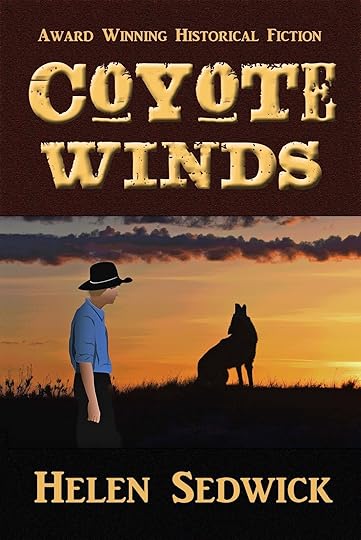 Exciting news. Around May 1, 2014, the audio book of COYOTE WINDS will be available for download on ITunes, Amazon.com and Audible.com. Gene Blank is narrating, actually, story-telling, the novel. He's a master at characterization and pacing. I've heard samples so far and cannot wait to hear the entire book.
Exciting news. Around May 1, 2014, the audio book of COYOTE WINDS will be available for download on ITunes, Amazon.com and Audible.com. Gene Blank is narrating, actually, story-telling, the novel. He's a master at characterization and pacing. I've heard samples so far and cannot wait to hear the entire book.January 12, 2014
If you can’t be a muskie, then just be a bass
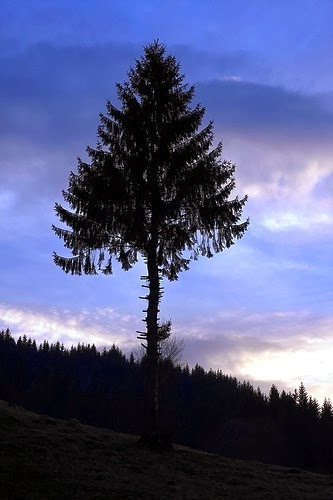 Photo by Horia Varlan on FlickrIF by Douglas Malloch If you can’t be a pine on the top of the hill,
Photo by Horia Varlan on FlickrIF by Douglas Malloch If you can’t be a pine on the top of the hill,Be a scrub in the valley – but be
The best little scrub by the side of the rill;
Be a bush if you can’t be a tree. If you can’t be a bush be a bit of the grass,
And some highway happier make;
If you can’t be a muskie, then just be a bass -
But the liveliest bass in the lake! We can’t all be captains, we’ve got to be crew,
There’s something for all of us here,
There’s big work to do, and there’s lesser to do,
And the task you must do is the near. If you can’t be a highway then just be a trail,
If you can’t be the sun be a star;
It isn’t by size that you win or you fail -
Be the best of whatever you are!
November 30, 2013
The Fourth Musketeer: Book Review Coyote Winds, by Helen Sedwick (Ten G...
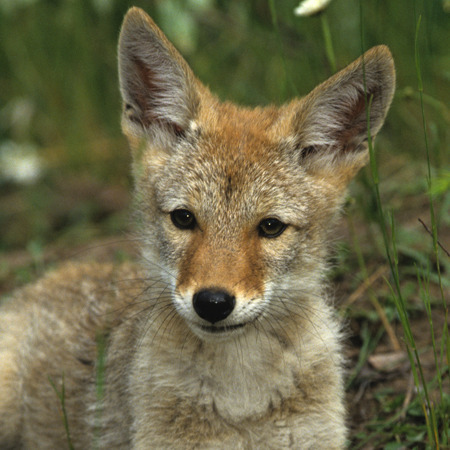 "Sedwick's novel succeeds in capturing the imagination of the reader with appealing characters, the spirit of adventure in the West, and the adversity of life during the Dust Bowl. We see this through the eyes of Andy, Myles' grandson, who stands in for the young reader. It's a novel I had a hard time putting down."
"Sedwick's novel succeeds in capturing the imagination of the reader with appealing characters, the spirit of adventure in the West, and the adversity of life during the Dust Bowl. We see this through the eyes of Andy, Myles' grandson, who stands in for the young reader. It's a novel I had a hard time putting down."Here's the entire review:
The Fourth Musketeer: Book Review Coyote Winds, by Helen Sedwick (Ten G...: Recommended for ages 10 and up. I live in a very urban area of Southern California, but one with a healthy population of coyotes. It...

October 27, 2013
Can Prairie Dogs Speak?
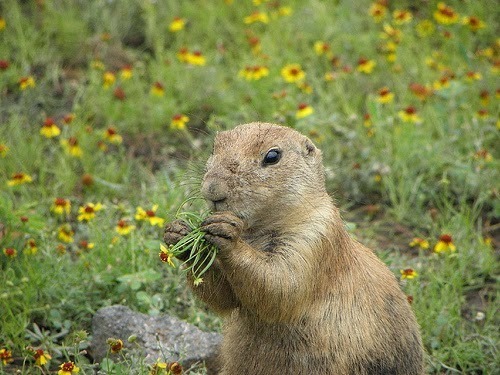 Photo by David HardyWell, not exactly. But they do communicate.
Photo by David HardyWell, not exactly. But they do communicate. According to Dr. Constantine Slobodchikoff, professor at Northern Arizona University and well-known animal behaviorist and conservation biologist, prairie dogs have a large vocabulary of yips and barks. Some are greetings, and others, like their yip-jumps, appear to be play.
Much of their vocabulary consists of warnings, and their barks differ depending on the type and location of a threat. A warning about an approaching coyote differs from the warning about a rattlesnake. These Animal Planet Videos demonstrate the various calls. (Sorry about the commercials.)
 1844 sketch of a prairie dog townPrairie dogs live in large communities, called towns, and have a sophisticated social structure, which involves a lot of kissing as well as territorial fighting. Hundreds of years ago, tens of millions of prairie dogs covered the Great Plains, but today, most of their natural habitat is gone and their numbers are greatly diminished. Their loss is widely felt, since prairie dogs are considered a keystone species.
1844 sketch of a prairie dog townPrairie dogs live in large communities, called towns, and have a sophisticated social structure, which involves a lot of kissing as well as territorial fighting. Hundreds of years ago, tens of millions of prairie dogs covered the Great Plains, but today, most of their natural habitat is gone and their numbers are greatly diminished. Their loss is widely felt, since prairie dogs are considered a keystone species. A keystone species plays a critical role in maintaining the structure of an ecological community because of its effect on other organisms. While the keystone is under the least pressure of any of the stones in an arch, the arch still collapses without it. Similarly, an ecosystem may experience a dramatic shift if a keystone species is removed.
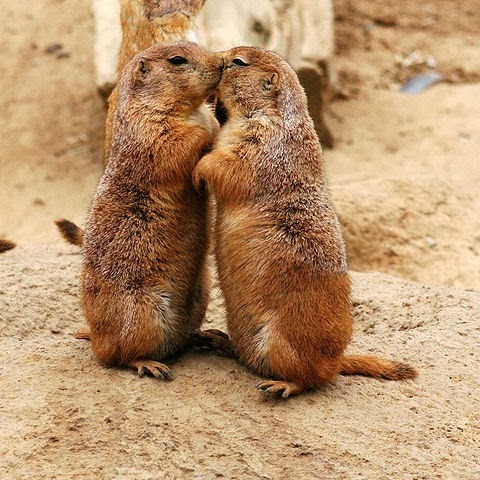
Feeding on grasses, sedges, forbs (broad-leafed vegetation), roots, and seeds, prairie dogs keep vegetation short, fast-growing, and full of nutrition. Their digging action churns up soil like a plow, allowing for more fertile plant life. This in turn draws other wildlife like pronghorns, bison, and rabbits to the area to graze, which in turn leads to a healthier population of predators.
Their burrows help to channel rain underground, reducing surface erosion and increasing the amount of water reaching the water table.
Prairie dog tunnels also make suitable habitats for other animals. Rabbits, salamanders, snakes, and burrowing owls live in abandoned burrows, and badgers and coyotes have been known to enlarge prairie dog burrows to form their own dens.
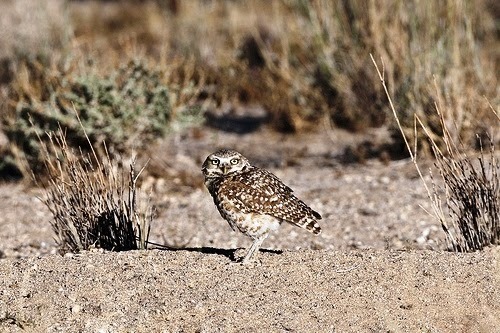
Finally, prairie dogs provide an ample food source for other animals in the food chain such as eagles, hawks, foxes, coyotes, badgers, and the endangered black-footed ferrets.
Unfortunately, many farmers consider the prairie dog to be destructive pests which eat crops, compete with cattle, and carry diseases. They shoot, poison, and even dynamite entire prairie dog towns. Environmentalists have attempted to have black-tailed prairie dogs listed as endangered.
Here is an informative passage from Wikipedia. Prairie Dogs
"In 2000, the U.S. Department of the Interior declared the black-tailed prairie dog “warranted” for listing as a threatened species, however the secretary was "precluded from actually listing the species by more urgent concerns". In 2004, the department declared that protection was “not warranted.” The day after the U.S. Fish and Wildlife Service removed the species from the candidate list, South Dakota announced its mass extermination campaign in the Conata Basin, home to one of the two viable black-footed ferret populations remaining in the wild. Tens of thousands of acres of prairie dogs were poisoned until 2006. In 2007, conservation groups filed suit in U.S. District Court in Denver challenging the secretary of the interior’s decision not to list the black-tailed prairie dog as “threatened” under the Endangered Species Act. Forest Guardians, Rocky Mountain Animal Defense, the Biodiversity Conservation Alliance, and the Center for Native Ecosystems contended that the livestock industry and land developers pressured the federal government not to list the prairie dog."
How you can help
I want to thank Abi Cushman for collecting this information on her site, Animal Facts.
If you would like to help the black-tailed prairie dog, there are several things you can do. You can contact government officials at the local, state, and federal levels advocating further protection for black-tailed prairie dogs. You can also make donations to charities trying to save the Great Plains and its wildlife like Wildlife Defenders or the American Prairie Foundation.
More Prairie Dog Resources
Rocky Mountain Animal Defense’s Save the Prairie Dog WebsitePrairie Dog CoalitionDefenders of Wildlife Black-tailed Prairie Dog PageUS Fish & Wildlife Service’s 2004 Prairie Dog Press Release“New Language Discovered: Prairiedogese,” NPR.org, January 20, 2011



